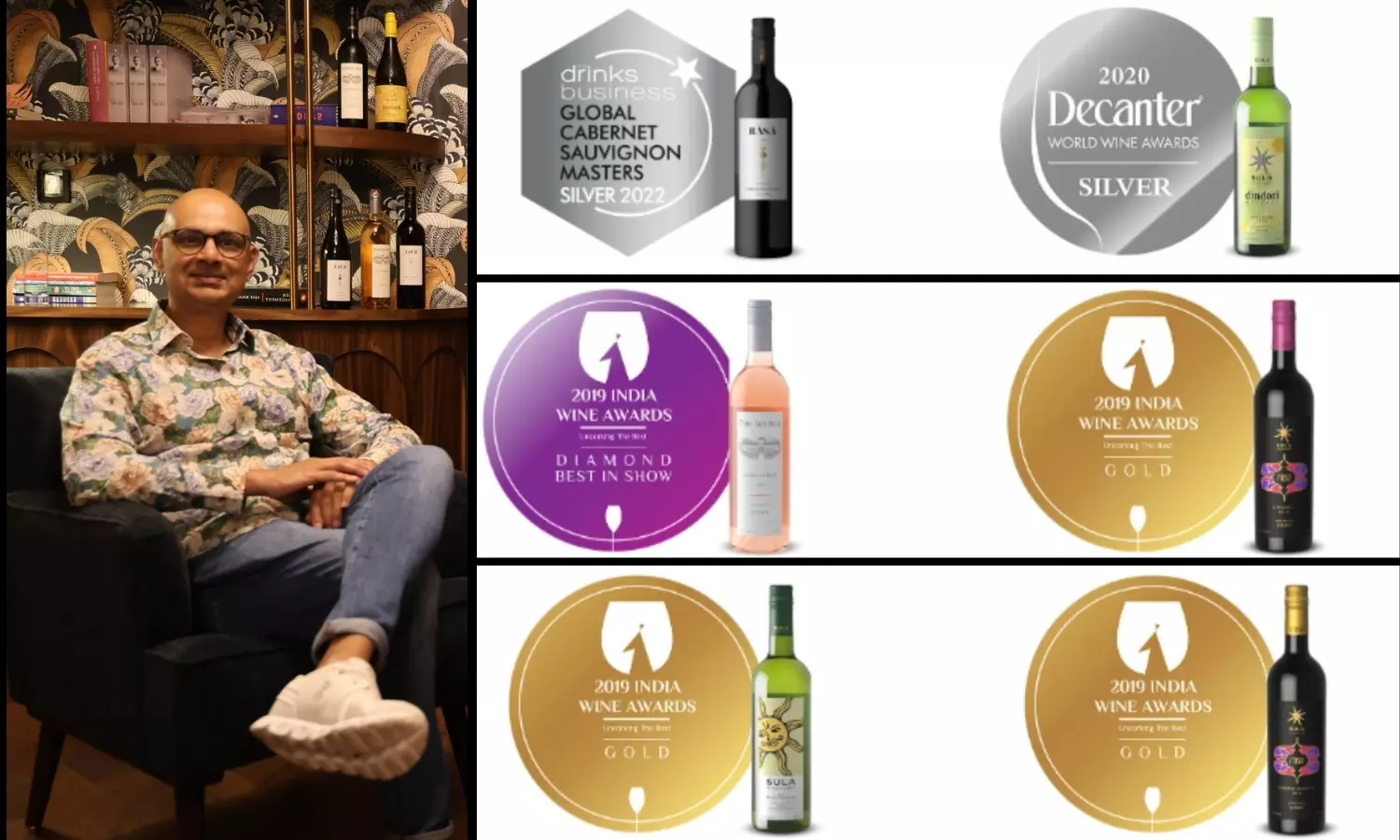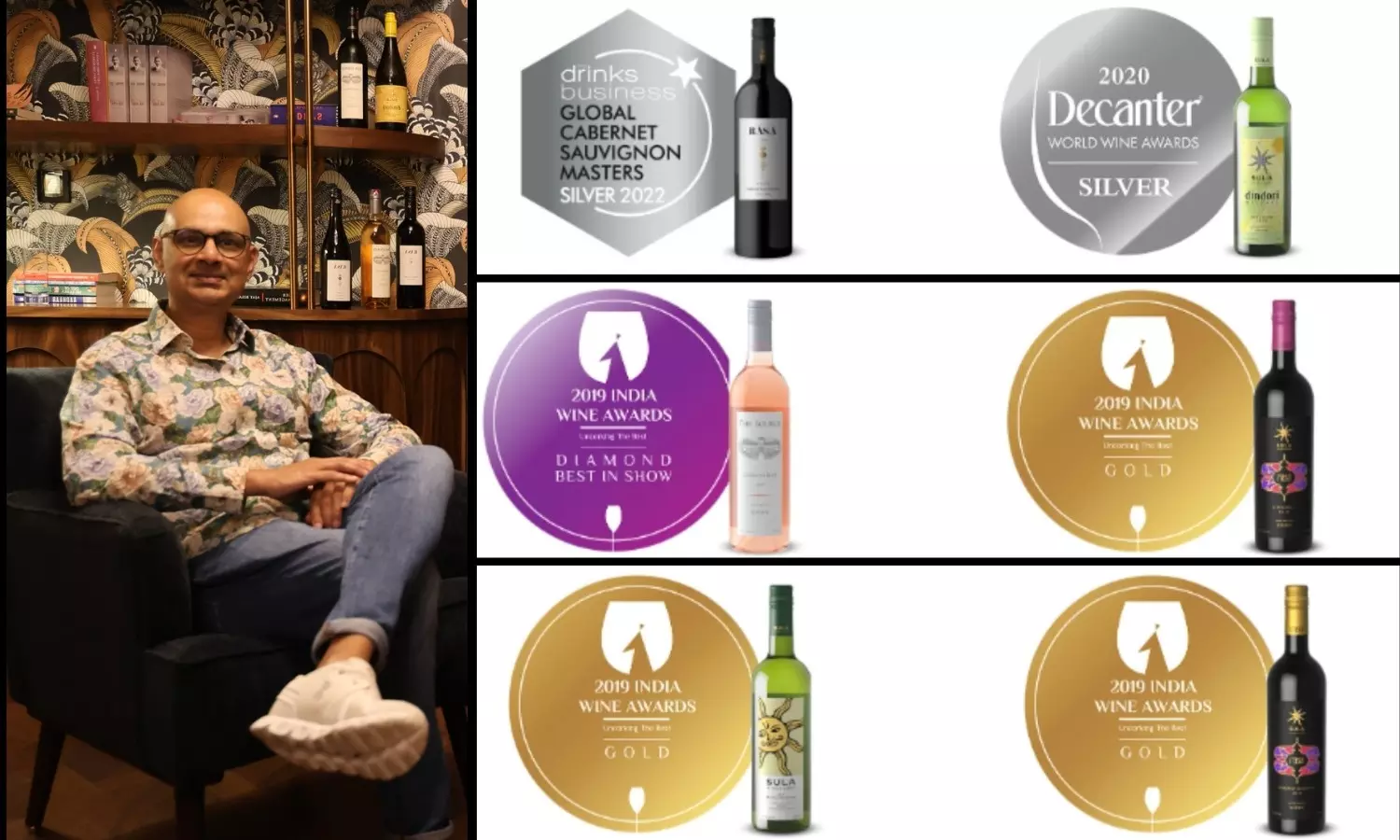
Sula as a brand is world famous now. How did you envision Sula’s role in shaping the country’s wine industry?
It has been 25 years since the birth of Sula. My story with wine in India and grapes started 30 years ago. When I came back from California to Nasik and found that it was a beautiful region for growing grapes, I realized nobody was making wine. And in California, I had started drinking wine. So I thought if grapes can grow (table grapes, raisin grapes, or Thompson seedless), then definitely, wine can be made. So I figured I am the right guy to do this. I found a Californian mentor. We started making it. At that time, I had very modest ambitions—to just make a drinkable, decent wine in India. But over the 25 years, it’s grown into something else. Today, I am very proud to say that we have one of the world’s really well-known wine regions today in Nasik.
We have a GI from the government of India, a geographical indication. You can say that I am the only living founder of a wine region. And today Nasik’s wines, Maharashtra’s wines, Sula’s wines are known across the globe. It’s something that I am really proud of.
We just work so the quality should get better every year. Over 25 years, that adds up to a lot of quality. And today we are winning medals all across the world. And that’s where we are!
Speaking of quality, how do you think India’s climate and soil conditions impact wine production?
So we learned a lot from the table grape growing that was already happening. You know that Maharashtra is one of the biggest regions for grape growing in the world. Around one lakh hectares, so 2.5 lakh acres of grapes. Because the Indian climate is hotter and wetter, you have to grow the grapes in the winter and then harvest at the end of the winter. Grapes actually are a temperate crop. In Europe, you grow grapes in the summer and you harvest at the end of summer. Because of this change in India, you get all the flavors and the acid buildup that is perfect for wine grapes because they are winter grown grapes. It doesn’t happen anywhere else in the world.
Plus we are 2000 feet above sea level at Nasik and 3000 feet above sea level in Bangalore. That altitude makes a big difference. So the winter growing season, plus the altitude, that’s what makes such great flavours—grapes filled with acid, flavours, and great wines as well.
Sula has been instrumental in popularizing wine culture in India. What strategies have you employed to educate and engage the Indian consumer?
Well, you are interviewing me after my interaction with 60 consumers, talking to them about the wines, just telling the story about the beginning of the wine. So we do things like this across the country all the time. We have a team of around 15 sommeliers, tasting stuff, experiencing stuff, going out there, talking to people in the hotels, restaurants, to consumers, educating them, telling them about what wine is. That’s one aspect. Then we have our wine tourism, which is one of the most impressive in the world. We are possibly the most visited vineyard in the world. We had three and a half lakh visitors last year. The most tastings done there—something like 60,000 tastings we did last year with these three and a half lakh people. It’s the place where more people taste their first glass of wine than anywhere else in the world. And that’s really the place where wine culture is sort of stemming from in India.
Since you care a lot about the environment, what are the sustainable measures that Sula has adopted?
Sula is one of the most sustainable wine operations in the world with a huge emphasis on solar energy, huge emphasis on saving water, and reducing energy. We are a member of the IWCA— International Wineries for Climate Action. We are not only making wine, but we are making wine trying to preserve the planet and the ecology. This is something that’s really important for us and you can bet that every glass and bottle of Sula wine is made with a view to preserving the planet. So even with our glass bottles, we are always working on reducing the weight of the glass bottles. Simple things like that make a huge difference.
What next for Sula?
We always have many new things happening. We just produced our first Sula wines in a can. We are making more sustainable, easier to put in the fridge product. We have new wines coming up all the time. I want to invite people who are interested in wine to come to one of our campuses in Nasik or to Bangalore to learn. These are the two main places where we welcome people and it’s a beautiful experience to learn first-hand.
What are the trends you have seen in the industry, particularly with respect to wine?
In India, the trend is very much towards red. Very interestingly, in the rest of the world, the trend is going more towards white, towards sparkling, towards rosé. But these things keep changing. Ultimately, our focus is on quality and better wine all the time. That is the most important thing—trying to maybe lower alcohol, that’s what people are looking for these days.
